Monstera is a popular houseplant, and for good reason. These plants are known for their lush leaves and rich color. While Monstera deliciosa may be the classic type of Monstera, there are many others to choose from. This diverse aroid genus actually contains about 50 different species, so you can definitely collect a wide variety of Monstera houseplants for green tropical vibes year-round. To introduce you to the gorgeous world of these plants, we’ve rounded up some of the most sought-after types of Monstera plants.
Monstera deliciosa
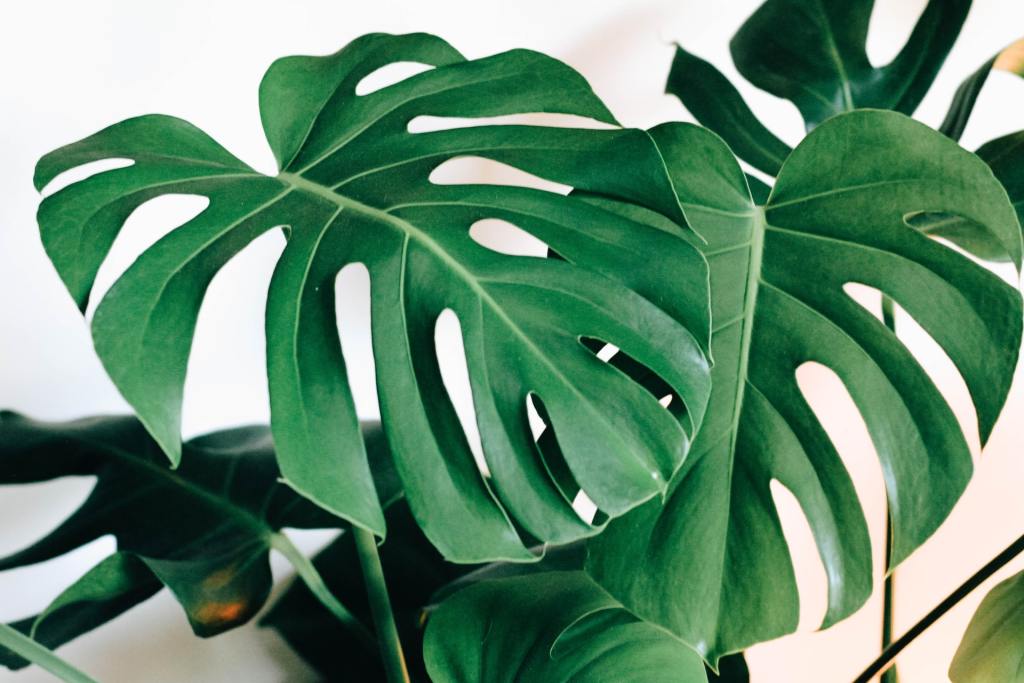
If you’re just getting into houseplants, one of the most ubiquitous plants you’ll come across is the Monstera deliciosa. Often mistaken for a philodendron, this lush plant features large, heart-shaped leaves with holes, or fenestrations.
Native to Central America, this plant has a tendency to grow quite large and all over the place if you don’t pin down its aerial roots. That’s why it’s a good idea to tie it to a moss pole stake. Other than its eventual need for a stake, it’s a pretty easygoing plant. You can even allow its soil to dry out before giving it a good soak.
To keep its growth ongoing and its leaves healthy, fertilize your Monstera deliciosa every other week during the growing season. Also, make sure to give your plant plenty of bright indirect light for full leaves!
Monstera Peru
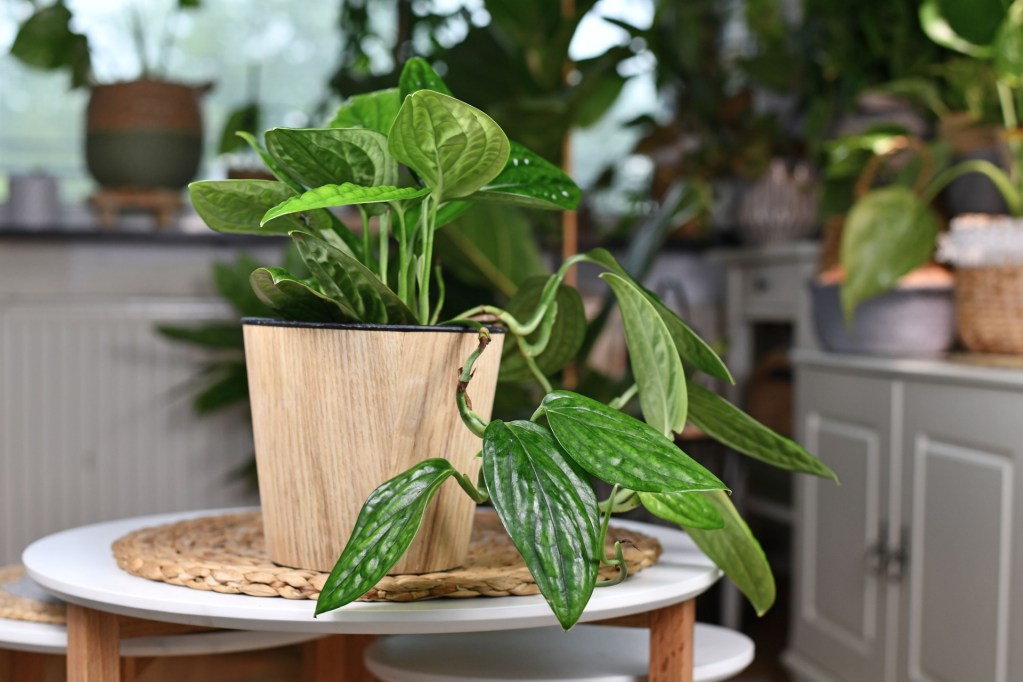
Imagine a lush pothos plant with thick, scaly leaves, and you’ll get something like the Monstera Peru (Monstera karstenianum). As its name suggests, it comes from tropical Peru. The dark green leaves, which measure about 9 centimeters long, feature a prominently ridged texture and don’t have any fenestrations.
Again, you can give this plant a moss pole (or even a wooden plank) to climb, or else it will trail. This Monstera thrives in airy, well-draining soil, so mix perlite and bark into your growing medium. Because the leaves are somewhat succulent, you can let the soil dry out in between waterings. Bright indirect light and monthly applications of a balanced fertilizer will keep your plant happy.
Monstera adansonii

The Monstera adansonii, or Swiss cheese plant, features pointed green leaves with prominent fenestrations. It tends to grow quite prolifically and trails as it grows, so it makes for a beautiful hanging basket plant. This fast grower, which comes from South America, benefits from bright, indirect light and a biweekly application of a balanced fertilizer.
You can let your plant dry out before soaking it thoroughly. The thin, lacy leaves also appreciate extra humidity, so turn on a humidifier or leave your plant on a tray filled with pebbles and water.
Monstera dubia
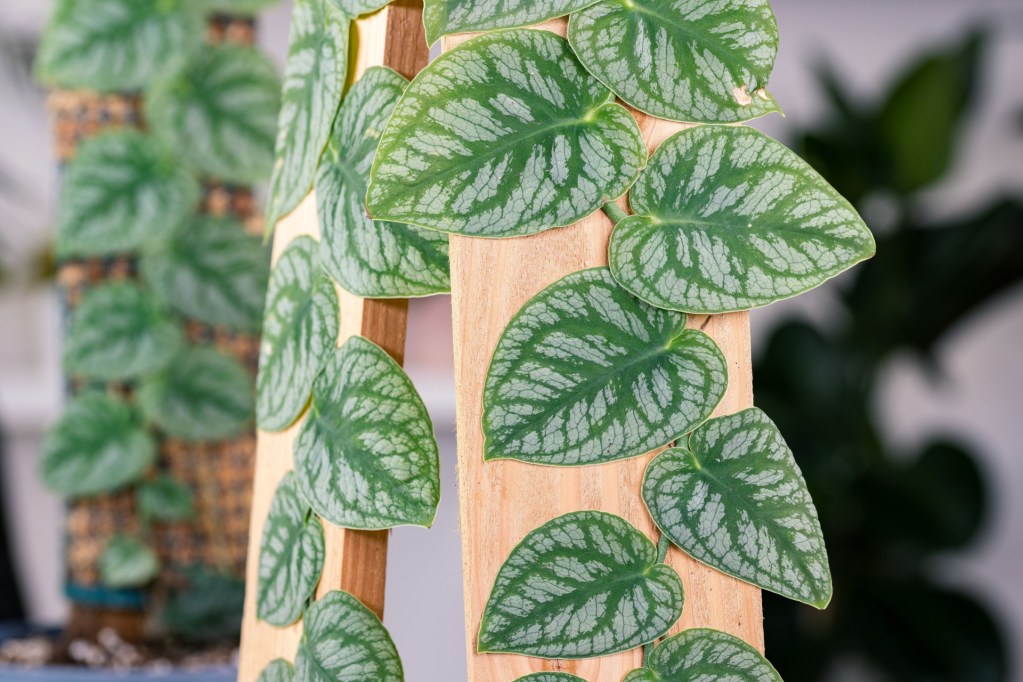
Originating from Central America and South America, the Monstera dubia can often be mistaken for a Scindapsus with the silvery sheen on its green, heart-shaped leaves. Sometimes called the shingle plant, it has a tendency to climb if you keep it on a plank or moss pole. While rarer than many other Monsteras, you’ll likely be able to track down a Monstera dubia online.
Bright indirect light is best for this plant, as it can easily get scorched. It appreciates loose, loamy soil, and you should water it when the top 2 inches of soil feel dry to the touch. This is another Monstera that appreciates the extra humidity, so leaving on the humidifier won’t hurt!
Monstera Thai Constellation
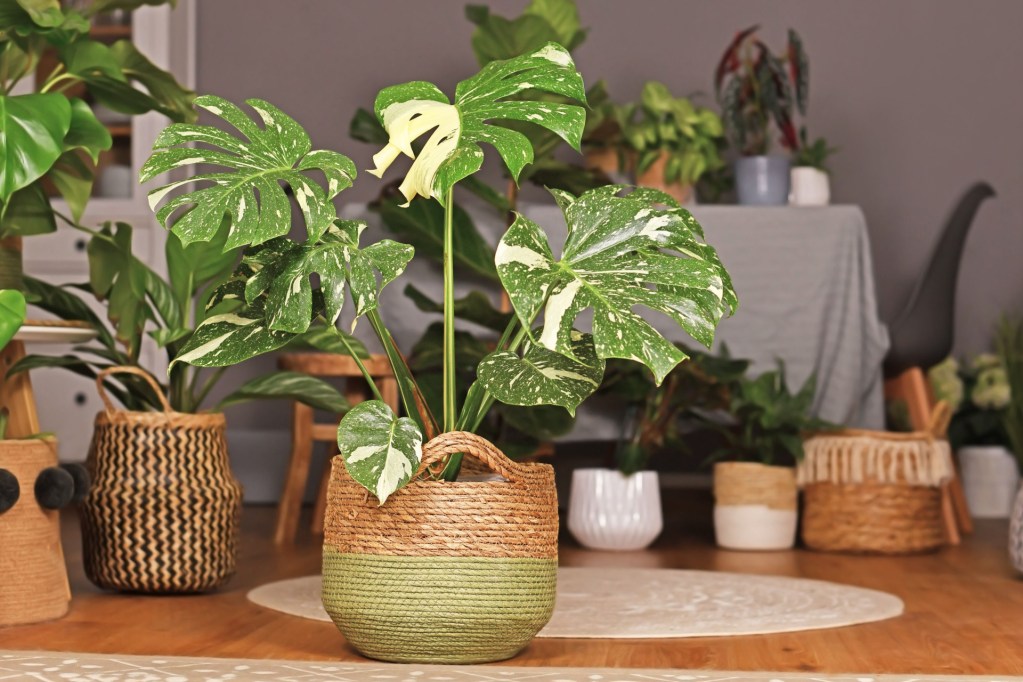
Avid plant collectors may have their eyes on this rare foliage beauty, which can easily sell for hundreds of dollars for a full plant. It looks exactly like a Monstera deliciosa, except it features creamy flecks across its fenestrated leaves. As its name suggests, the Thai Constellation was developed at a tissue culture lab in Thailand. This plant can be a bit fussy, so pay close attention to its needs.
Keep your plant by bright indirect light so the green parts of the leaves can photosynthesize, but don’t expose it to so much bright direct light that it burns. Water your plant only when the soil feels dry on top, and make sure it has well-draining soil. The most important thing is to pay attention to the humidity level — it prefers a 60% to 80% humidity level, so a humidifier is your best bet for preventing crispy, curled leaves.
Monstera obliqua
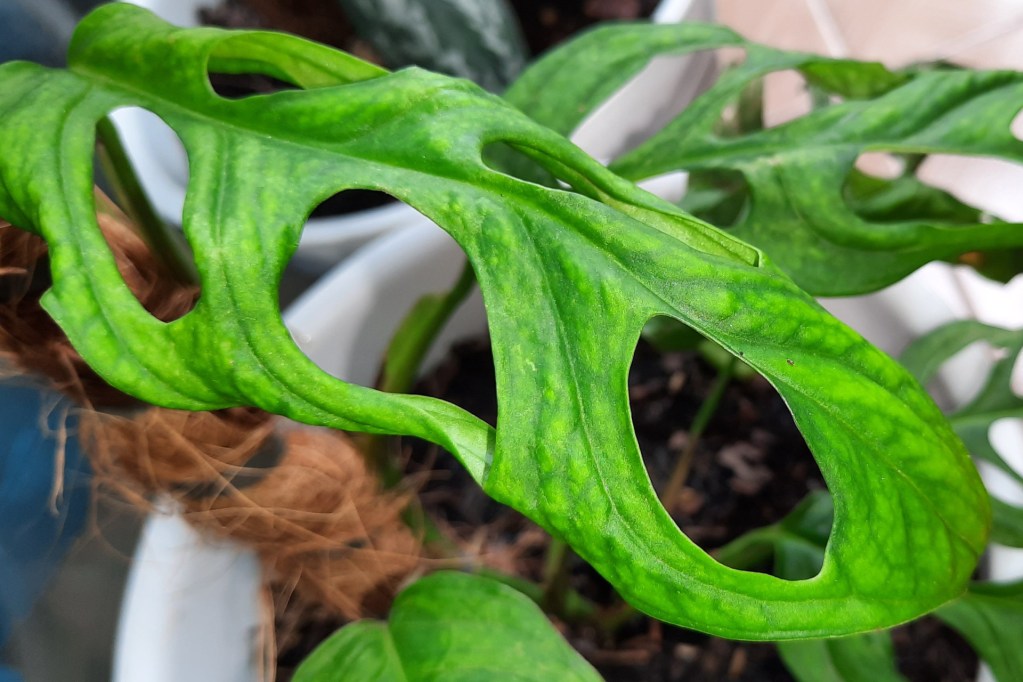
If you love the look of a Monstera adansonii but want to try a more challenging plant, the rare Monstera obliqua may be right up your alley. It features extra large fenestrations, so much so that it may sometimes appear to be more hole than leaf.
While Monstera plant care is generally easy, Monstera obliquas are notoriously difficult to maintain, even if you’re an experienced grower. Constant humidity is a must, and you may even want to keep your plant in an indoor greenhouse cabinet. Room temperature is OK for this plant, but you want to be careful with light, as too much shade will lead to wilting leaves and too much direct light will burn them. During the growing season, give your plant a gentle, slow-release organic fertilizer.
Monstera albo

Another variegated Monstera species, Monstera albo is known for larger patches of white, often with some speckling alongside those patches. This distinguishes it from its close cousin, the Monstera Thai constellation. Monstera albo are not the easiest Monsteras to grow, as they need a delicate balance when it comes to light. Too much light can burn the more sensitive white patches, but not enough light will cause it to fade and revert to a solid green. However, if you have the time and energy to devote to growing one, Monstera albo plants are gorgeous, making a striking addition to any home or indoor garden.
With all the different Monstera plants out there, you can definitely find one that matches your specific taste. Keep it simple with a Monstera deliciosa, or go for a more textured look with a Monstera Peru. If you’re a seasoned houseplant lover, you may even want to try your hand at a Monstera obliqua or the Thai Constellation. Whichever plant you go for, it’s bound to grow monstrously with dedicated care and perhaps a bit of extra humidity.




